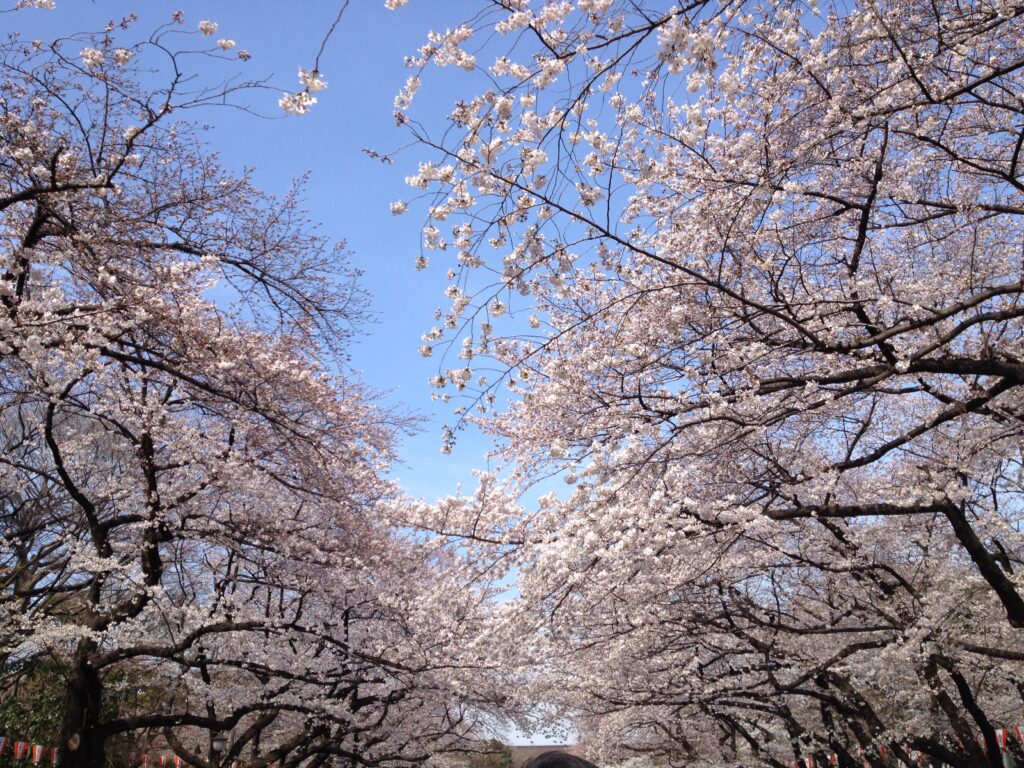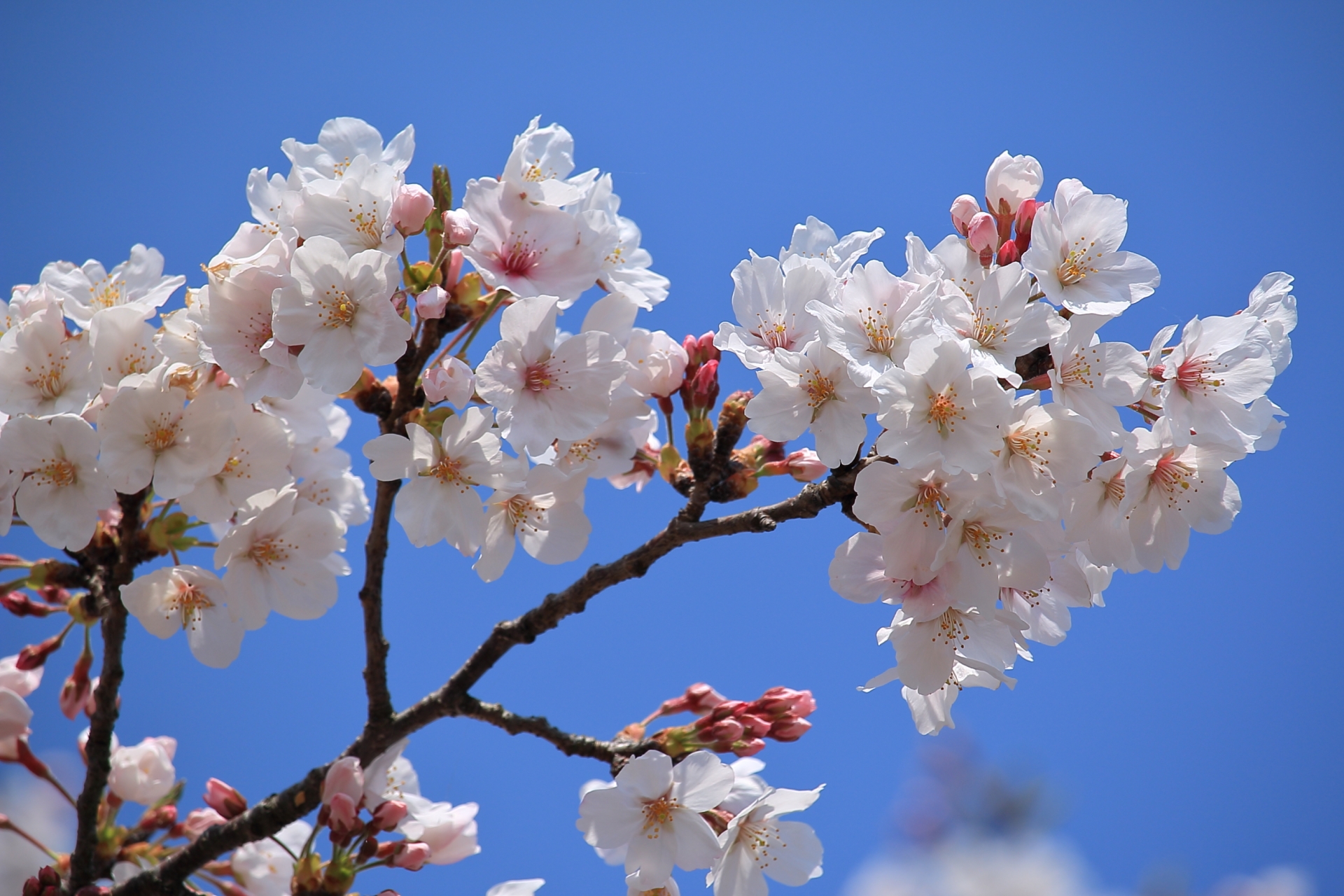そろそろ桜の開花が気になる季節になりました。
今年は平年より早く開花すると予想されていますね。
桜のお花見(cherry blossom viewing)はいつ頃から人気になったのか、英語で見ていきましょう。
花見は梅から桜へ


In the Nara period, aristocrats enjoyed plum blossom viewing.
奈良時代は、貴族たちは梅の花見を楽しみました。
Manyoshu, the Japan’s oldest collection of waka poems, contains 118 poems about plum blossoms. On the other hand, poems about cherry blossoms are only about 40.
日本の最古の和歌集である万葉集には、梅の花についての和歌が118首あります。一方で、桜の花についての和歌はたったの40首です。



It is said that Emperor Saga held the first cherry blossom viewing party in Kyoto in 812.
嵯峨天皇が812年、京都で初めて桜の花見の宴を催したと言われています。
Invited guests were creating poems under the cherry trees.
招待された人たちは、桜の木の下で歌を詠んでいました。

農民にとっての桜

“Sa” means the deity of rice field and “kura” means the place where the deity resides (stays).
「さ」は田の神様を意味し、「くら」は神様が宿る場所を意味します。
In ancient times, farmers believed that the deity of rice field came down to a cherry tree in spring. They offered sake under the tree and prayed for a good harvest.
古代、農民は春になると田の神様が桜の木に降りてくると信じていました。豊作を願って、木の下に酒をお供えしていました。
江戸時代のお花見は庶民の娯楽


In the Edo period, cherry blossom viewing became popular among ordinary people.
江戸時代には、桜の花見は庶民の間で人気になりました。
They enjoyed having parties under the cherry trees.
桜の木の下で宴会をすることを楽しみました。
Thousands of cherry trees were planted in the Edo area by order of Tokugawa Yoshimune, the 8th shogun of the Edo shogunate.
8代目の江戸将軍、徳川吉宗の命ので何千本もの桜の木が江戸の町に植えられました。


また、隅田川沿いの長命寺で桜餅が発明されたのも有名なお話ですね。
桜の落ち葉の掃除に苦労していた長明寺の門番、山本新六という方が「桜の葉を塩漬けにして菓子に巻こう!」と思いついたことが始まり。
将軍の桜事業は、思わぬ副産物を生み出したわけですね。
ちなみに桜餅はちょっと長いですが、以下のように説明できます。
-
- 関東風(長明寺):mochi made with flour, filled with sweet red bean paste, wrapped in a salted cheery leaf とか a kind of small crepe filled with sweet red bean paste, wrapped in a salted cherry leaf
- 関西風(道明寺):mochi (or a rice cake) filled with sweet red bean paste, wrapped in a salted cherry leaf


今回は、お花見の歴史について簡単に英語にしてみました。次回は、日本人がなぜ桜に魅了されるのかを見ていきます。



